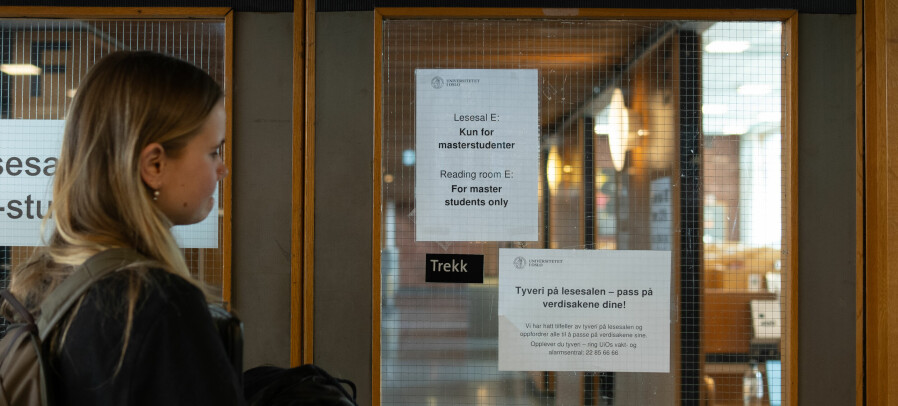
Few students at UiO have chlamydia
Compared to the general population of adults in their twenties, far fewer students who get tested at the Student Health Services have chlamydia.
A low percentage of students at Blindern have been tested positive for chlamydia in comparison to the general population, especially in the age group between 20 and 24 years of age. Among this group 6,4 per cent of women and 13 per cent of men tested positive. Nationally, the corresponding numbers are 9,6 and 17 per cent respectively.
– This could suggest that students have a different sexual behaviour than those who become infected with chlamydia, states Medical Director at the Student Health Services Marit Eskeland.
In 2007, a total of 2529 chlamydia tests from the Student Health Services were sent for analysis and 149 of these tests were positive.
Gives credit to the women
According to Eskeland, women can take much of the honour for this.
– The women who get tested here have such low incidence rates of chlamydia, that this could also have an effect on the total number of infections.
There is an especially big difference between men and women in the age group between 25 and 29 years of age. Of the men in this age group who get tested at the Student Health Services, a total of 11,6 per cent test positive for chlamydia, while the same is true of just 2,5 per cent of the women. Eskeland also points out that far more women than men get tested.
– Maybe women are more aware, and it is less of a taboo for them to get tested, she says.
Warns against «dark figures»
– The low percentage of students tested positive for chlamydia at the university does not necessarily mean that students at Blindern are better at getting tested than elsewhere in the country. It could be the case that the Student Health Services are not getting through to the students who are most at risk, Eskeland emphasizes. The Student Health Services want far more students to get tested, both male and female.
– We try to make it easy to get tested. You can come to the Student Health Services to get tested without making an appointment. In addition to this, we offer information and follow-ups. Everyone who changes partner and has unprotected sex, should get tested. However, the most important thing is to have safe sex, Eskeland says.
Not the age group most at risk
Eskeland also points out another important reason why the incidences of chlamydia are so low at the University of Oslo.
– The fact that such a small percentage of students at Blindern have been tested positive for chlamydia, could be because those getting tested are not in the age group most at risk, the medical director states.
Nationwide, the age group between 15 and 19 years of age is the worst: 17,3 per cent of those tested have chlamydia.
– We test very few people in this age group at the Student Health Services, Eskeland says.

































